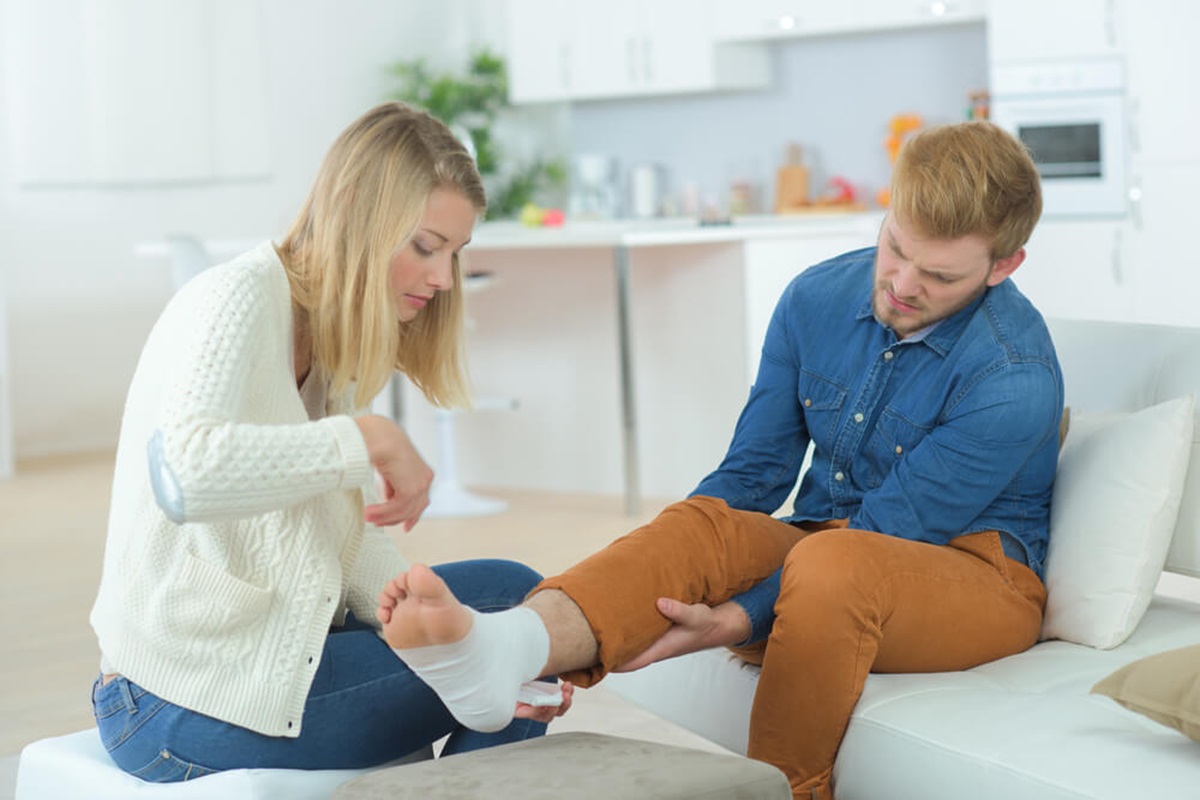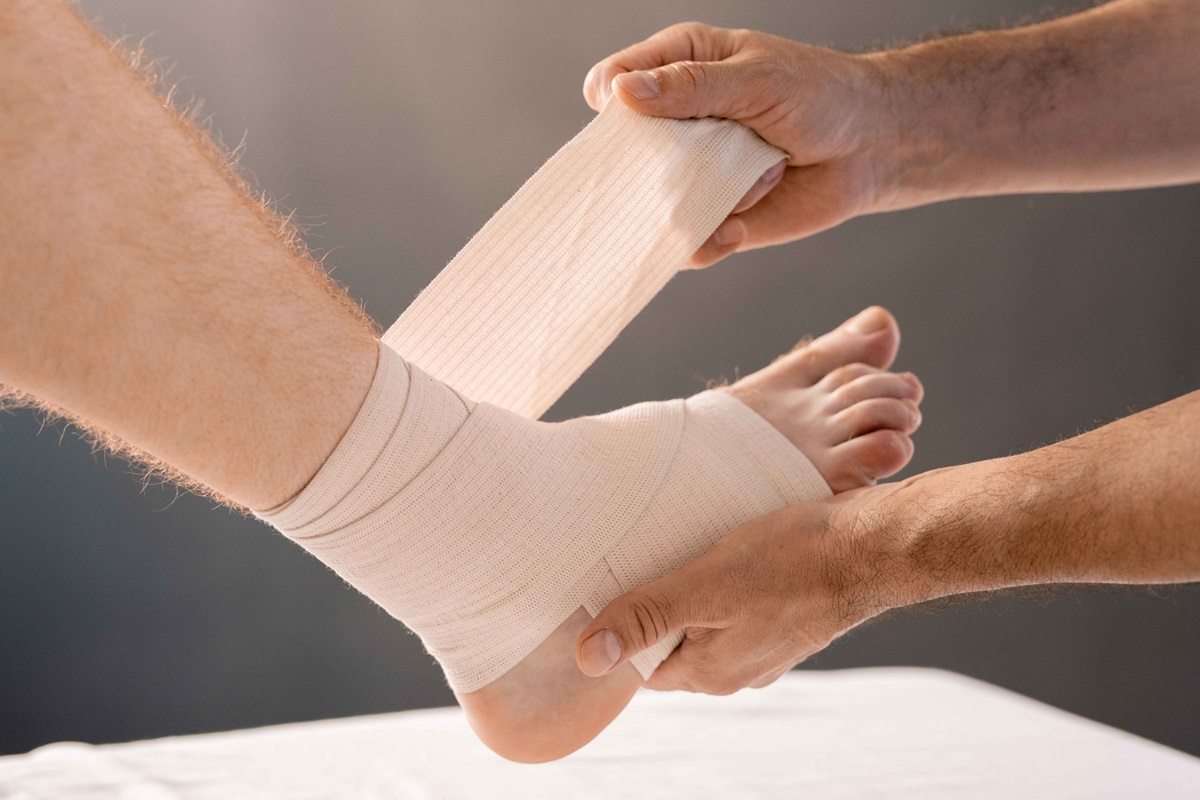How long does Achilles tendonitis last? This is one of the most common concerns for individuals experiencing persistent heel or ankle pain. Recovery time can vary greatly, but proper treatment plays a significant role in speeding up the healing process and preventing future flare-ups. Understanding the severity of the condition, structural change in the tendon, and your commitment to a rehab plan are essential for optimal recovery.
Understanding Achilles Tendonitis
Achilles tendonitis is a condition that affects many active individuals and athletes. To manage it effectively, one must understand its underlying causes, stages, and risk factors. Knowing whether you’re dealing with acute, subacute, or chronic tendon damage can shape the right Achilles tendonitis treatment and shorten recovery time.
What Is Achilles Tendonitis?
Achilles tendonitis is the inflammation of the Achilles tendon, the strong band of tissue connecting the calf muscles to the heel bone. This condition is often caused by overuse or repetitive stress, resulting in tendon swelling, tenderness, and pain. In more advanced stages, it may progress into Achilles tendinosis, a degenerative condition marked by tendon thickening and reduced function.
Other related conditions include insertional Achilles tendinitis and noninsertional Achilles tendinitis, which are classified based on the location of tendon involvement. These can be further complicated by Haglund’s deformity or the presence of bone spurs near the tendon insertion. Left untreated, these issues may increase the risk of Achilles tendon rupture and require surgical treatment.
Common Causes and Risk Factors
Achilles tendonitis typically develops due to:
- Sudden increase in physical activity or training intensity without proper progression
- Poor footwear or lack of proper support, leading to overuse and tendon irritation
- Tight calf muscles or calf muscle tightness, which increase tension on the Achilles tendon
- Improper running technique or overtraining, especially in those experiencing Achilles pain when running
- Hormonal factors like low oestrogen levels in women, which can impact tendon health
- Use of fluoroquinolone antibiotics, which are linked to tendon damage
- Aging and degeneration, as tendons lose elasticity with time
- Comorbidities like diabetes or autoimmune conditions that impair tendon healing
Recent studies suggest that Achilles tendonitis (AT) is more frequently observed in athletes compared to amateur exercisers. Research indicates that the prevalence of AT among athletes is approximately 6%, while for recreational exercisers it’s closer to 4%. Interestingly, this difference in prevalence does not appear to be influenced by gender, with both males and females affected at similar rates.
Typical Recovery Timeline
Recovery time for Achilles tendonitis can vary depending on the severity and stage of the injury. Many patients wonder, “how long does Achilles tendonitis last” and what factors might influence their recovery journey. Whether acute or chronic, understanding the expected timelines and seeking care in a timely manner is essential for avoiding long-term damage.
Acute vs. Chronic Cases
In acute cases, Achilles tendonitis may resolve within 2 to 6 weeks with proper rest, activity modification, and supportive care. Subacute cases, often seen in patients who delay treatment, may last several months. Chronic cases—especially those with structural change, calcification, or tendon degeneration—may extend to 6 to 12 months or longer.
Although Achilles tendonitis can occur across a wide demographic, tears and ruptures tend to be more common in certain populations. Data shows that the highest incidence of Achilles tendon tears occurs in active men aged 20 to 39. While there’s always an element of unpredictability, a combination of athletic stress and tendon vulnerability seems to contribute most to injuries in this age group.
Factors Influencing Recovery Duration

Several variables can impact how long Achilles tendonitis lasts:
- Severity and stage of injury (acute, subacute, chronic)
- Duration of injury before treatment begins
- Amount of tendon damage or degeneration
- Structural changes, such as tendon thickening or calcification
- Overall health, sleep quality, mindset, and stress levels
- Comorbidities like diabetes or autoimmune disorders
- Adherence to a rehab plan and physical therapy
- Use of appropriate footwear, orthotics, and activity modification
- Imaging tools like x-rays or MRI scans to assess injury grade
When to Seek Professional Help
You should consult a physical therapist or sports medicine provider if:
- Pain persists beyond two weeks despite rest and self-care
- There is visible swelling, tendon thickening, or limited range of motion
- Achilles pain when running disrupts your training or lifestyle
- You suspect complications like nerve damage or tendon rupture
- You’ve experienced continued pain after surgery or a prior injury
Early intervention often leads to better outcomes and shorter Achilles tendonitis recovery time. Speak with a PT or Request Appointment at Backcountry Physical Therapy to get started.
Effective Treatment Options
Treating Achilles tendonitis involves a comprehensive approach to reduce pain, restore function, and prevent recurrence. The effectiveness of any Achilles tendonitis treatment depends on early diagnosis, proper guidance, and consistency in care.
Home Remedies and Self-Care
For mild cases, self-care strategies may be enough to manage symptoms. These methods are often the first step in addressing tendon irritation and preventing progression to a more severe stage. Implementing them early on can help reduce discomfort and promote faster healing while minimizing the need for more invasive treatments.
- Rest and activity modification to prevent overuse
- Ice application to reduce inflammation and tendon swelling
- Nonsteroidal anti-inflammatory medications (NSAIDs) for pain relief
- Calf and Achilles stretching to relieve tightness
- Supportive shoes and heel lifts to reduce tendon load
- Use of over-the-counter orthotics for foot alignment
These interventions can help in the early stages of tendonitis and support short-term healing.
Medical Interventions and Therapies
When symptoms persist or worsen, advanced therapies may be necessary. These treatments go beyond home care and are especially useful for moderate to severe or chronic cases of Achilles tendonitis. Medical interventions are designed to target the underlying damage and support tendon regeneration for long-term relief.
- Platelet-rich plasma (PRP) injections to enhance tendon regeneration
- Extracorporeal shockwave therapy (ESWT) to stimulate healing
- Custom orthotics to improve gait and reduce tendon strain
- Walking boots or braces to immobilize the foot in severe cases
- Surgical treatment as a last resort for chronic degeneration or tendon rupture
These medical interventions can help reduce pain duration and improve the overall recovery timeline.
Role of Physical Therapy in Recovery
Physical therapy plays a central role in long-term recovery from Achilles tendonitis. It combines manual therapy, mobility work, and strengthening exercises tailored to your condition. A structured rehab plan significantly improves outcomes and shortens Achilles tendonitis recovery time.
Physical Therapy for Achilles Tendonitis
Physical therapy is the gold standard for managing both acute and chronic Achilles tendon injuries. It helps patients regain function, prevent future injury, and return to activity safely. Backcountry Physical Therapy provides comprehensive rehabilitation programs for patients at all recovery stages.
Benefits of Physical Therapy
Physical therapy provides essential benefits during the recovery process from Achilles tendonitis. It not only addresses immediate symptoms but also targets the root causes of dysfunction. Through consistent treatment, patients experience faster healing and reduced risk of future injuries.
- Reduces inflammation, pain, and swelling
- Improves mobility and corrects biomechanical imbalances
- Strengthens the Achilles tendon and surrounding muscles
- Lowers the risk of reinjury or progression to Achilles tendinosis
- Offers emotional support during recovery to manage stress and mindset
Common Exercises and Techniques
Physical therapy uses a range of targeted exercises and hands-on techniques to restore tendon health. These methods are tailored to your injury’s stage and severity. Regular participation in these activities improves mobility, function, and tendon strength. Therapists use a variety of methods based on severity of the condition:
- Eccentric strengthening exercises for tendon remodeling
- Calf and ankle mobility drills to increase flexibility
- Myofascial release, massage, and joint mobilization
- Gait retraining and balance exercises
- Taping, bracing, and progressive loading protocols
These strategies target both pain relief and functional restoration.
Preventing Future Injuries

Preventing a recurrence of Achilles tendonitis is just as important as treating the current condition. Physical therapy helps patients build sustainable habits and routines that support long-term tendon health. Focusing on prevention can minimize downtime and maintain athletic performance.
- Ongoing stretching and strengthening routines
- Proper footwear selection and orthotic support
- Education on training frequency and intensity
- Regular reassessments to monitor for recurrence
Preventive physical therapy keeps tendons resilient and helps patients avoid asking again, “how long does Achilles tendonitis last?”
Why Choose Backcountry Physio for Your Recovery
Backcountry Physical Therapy specializes in treating outdoor athletes and active individuals experiencing foot and ankle conditions. We combine personalized care with advanced treatment techniques to get you back on the trail, track, or field.
Personalized Treatment Plans
Every patient receives a tailored Achilles tendonitis treatment plan based on their goals, activity level, and stage of injury. We assess your movement patterns and create targeted interventions that adapt as you heal.
Experienced Physiotherapists
Our team is highly trained in managing tendon-related injuries, including insertional Achilles tendinitis and tendinosis. We use modern tools, hands-on therapy, and evidence-based practices to promote healing.
Convenient Location and Scheduling
With flexible scheduling and both in-person and virtual care options, we make it easy to stay consistent with your rehab. Request Appointment today to start your recovery journey.
Conclusion
How long does Achilles tendonitis last? The answer depends on several factors—including injury severity, how early you seek treatment, and how committed you are to rehabilitation. With proper care, most cases can be resolved effectively. The team at Backcountry Physical Therapy is here to guide you every step of the way.
FAQs
What is the fastest way to heal Achilles tendonitis?
The fastest way to heal Achilles tendonitis involves early rest, eccentric strengthening, supportive footwear, and physical therapy. These components work together to reduce pain and improve function efficiently.
Does Achilles tendonitis ever heal?
Yes, Achilles tendonitis can fully heal, especially when treated early and properly. Chronic conditions may take longer, but structured rehabilitation significantly improves long-term outcomes.
Is walking good for Achilles tendonitis?
Walking can be beneficial in later stages of recovery, especially when supervised by a physical therapist. Early on, it’s important to rest and avoid activities that cause pain or worsen inflammation.



